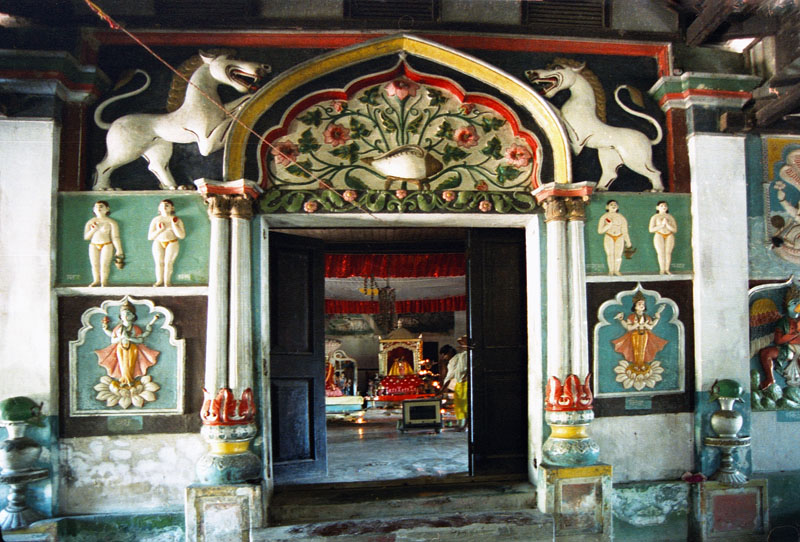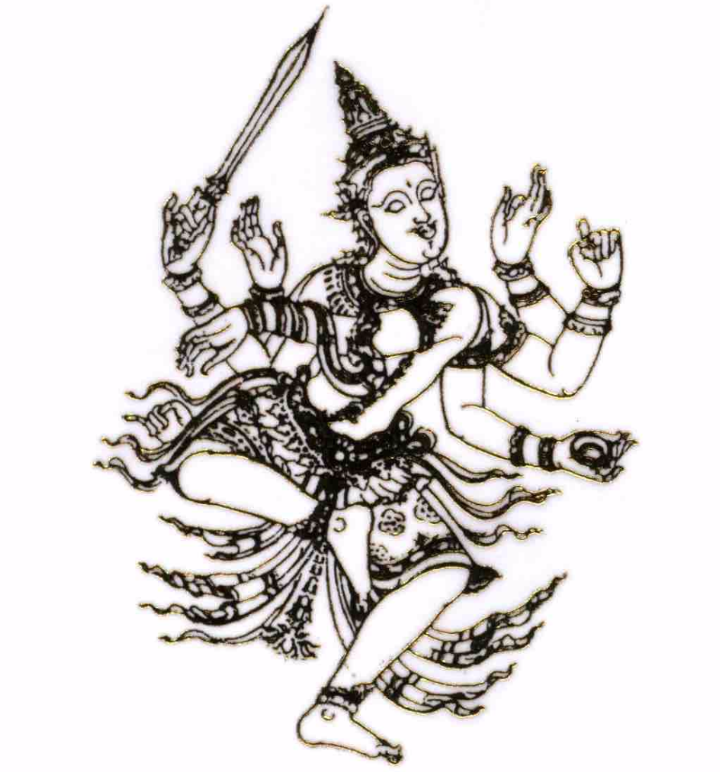|
Sattriya
''Sattriya'' ( as, সত্ৰীয়া), or ''Sattriya Nritya'', is a major Indian classical dance. This dance was initially created as part of Bhaona which are performances of ''Ankiya Nat'', one-act plays, originally created by Sankardev, the 15th-16th century polymath from Assam.Ankiya Nat UNESCO: Asia-Pacific Database on Intangible Cultural Heritage (ICH), Japan These dances are part of the living traditions today of Sattras, which are communities of live-in devotees belonging to the , the religion established by Sankardev. [...More Info...] [...Related Items...] OR: [Wikipedia] [Google] [Baidu] |
Sangeet Natak Akademi
Sangeet Natak Akademi (The National Academy of Music, Dance and Drama in English) is the national level academy for performing arts set up by the Government of India. History It was set up by the Indian education ministry on 31 May 1952 and became functional the following year, with the appointment of its first chairman, Dr. P. V. Rajamannar. Dr Rajendra Prasad, the first President of India, inaugurated it on 28 January 1953 in a special function held in the Parliament House. The academy's Fellowship and Award are considered very prestigious. Functions The academy functions as the apex body of the performing arts in the country to preserve and promote the vast cultural heritage of India expressed in music, dance and drama. It also works with governments and art academies in states and territories of the country. SNA established several institutions over the years: * Manipur Dance Academy, Imphal * Sattriya Centre * Kathak Kendra ( National Institute of Kathak Dance), ... [...More Info...] [...Related Items...] OR: [Wikipedia] [Google] [Baidu] |
Sankaradeva
Srimanta Sankardev( শ্ৰীমন্ত শংকৰদেৱ )(; ; 1449–1568) was a 15th–16th century Assamese polymath; a saint-scholar, poet, playwright, dancer, actor, musician, artist social-religious reformer and a figure of importance in the cultural and religious history of Assam, India. He is widely credited with building on past cultural relics and devising new forms of music (Borgeet), theatrical performance (Ankia Naat, Bhaona), dance (Sattriya), literary language (Brajavali). Besides, he has left an extensive literary oeuvre of trans-created scriptures (Bhagavat of Sankardev), poetry and theological works written in Sanskrit, Assamese and Brajavali. The Bhagavatic religious movement he started, Ekasarana Dharma and also called Neo-Vaishnavite movement, influenced two medieval kingdoms – Koch and the Ahom kingdom – and the assembly of devotees he initiated evolved over time into monastic centers called Sattras, which continue to be important socio-re ... [...More Info...] [...Related Items...] OR: [Wikipedia] [Google] [Baidu] |
Sattra
Satras are institutional centers associated with the Ekasarana tradition of Vaishnavism, largely found in the Indian state of Assam and neighboring regions. Numbering in the hundreds, these centers are generally independent of each other and under the control of individual ''adhikaras'' (or ''satradhikars''), though they can be grouped into four different ''Sanghatis'' (orders). These centers, in the minimum, maintain a prayer house ('' Namghar'', or '' Kirtan-ghar''), initiate lay people into the Ekasarana tradition and include them as disciples of the Satra from whom taxes and other religious duties are extracted. The Neo-Vaishnavite satra culture started in the 16th century. They grew rapidly in the 17th century and patronage extended to them by first the Koch kingdom and later the Ahom kingdom was crucial in the spread the Ekasarana religion. Many of the larger Satras house hundreds of celibate and non-celibate ''bhakats'' (monks), hold vast lands and are repositories o ... [...More Info...] [...Related Items...] OR: [Wikipedia] [Google] [Baidu] |
Natya Shastra
The ''Nāṭya Śāstra'' (, ''Nāṭyaśāstra'') is a Sanskrit treatise on the performing arts. The text is attributed to sage Bharata Muni, and its first complete compilation is dated to between 200 BCE and 200 CE, but estimates vary between 500 BCE and 500 CE. The text consists of 36 chapters with a cumulative total of 6000 poetic verses describing performance arts. The subjects covered by the treatise include dramatic composition, structure of a play and the construction of a stage to host it, genres of acting, body movements, make up and costumes, role and goals of an art director, the musical scales, musical instruments and the integration of music with art performance. The ''Nāṭya Śāstra'' is notable as an ancient encyclopedic treatise on the arts, one which has influenced dance, music and literary traditions in India. It is also notable for its aesthetic "Rasa" theory, which asserts that entertainment is a desired effect of performance arts but not ... [...More Info...] [...Related Items...] OR: [Wikipedia] [Google] [Baidu] |
Sankardev
Srimanta Sankardev( শ্ৰীমন্ত শংকৰদেৱ )(; ; 1449–1568) was a 15th–16th century Assamese polymath; a saint-scholar, poet, playwright, dancer, actor, musician, artist social-religious reformer and a figure of importance in the cultural and religious history of Assam, India. He is widely credited with building on past cultural relics and devising new forms of music (Borgeet), theatrical performance ( Ankia Naat, Bhaona), dance ( Sattriya), literary language (Brajavali). Besides, he has left an extensive literary oeuvre of trans-created scriptures ( Bhagavat of Sankardev), poetry and theological works written in Sanskrit, Assamese and Brajavali. The Bhagavatic religious movement he started, Ekasarana Dharma and also called Neo-Vaishnavite movement, influenced two medieval kingdoms – Koch and the Ahom kingdom – and the assembly of devotees he initiated evolved over time into monastic centers called Sattras, which continue to be important soc ... [...More Info...] [...Related Items...] OR: [Wikipedia] [Google] [Baidu] |
Ekasarana Dharma
Ekasarana Dharma (literally: ''Shelter-in-One religion'') is a neo-Vaishnavite monolithic religion propagated by Srimanta Sankardeva in the 15th-16th century in the Indian state of Assam. It reduced focus on vedic ritualism and focuses on devotion (''bhakti'') to Krishna in the form of congregational listening (''sravan'') and singing his name and deeds (''kirtan''). The simple and accessible religion attracted already Hindu as well as non-Hindu populations into its egalitarian fold. The neophytes continue to be inducted into the faith via an initiation ceremony called ''xoron-lowa'' (literally: take-shelter), usually conducted by ''Sattradhikars'', heads of monastic institutions called Sattras, who generally draw apostolic lineage from Sankardev. Some Sattradhikars, especially those from the Brahma-sanghati, reject apostolic lineage from Sankardev due to an early schism with the order. Some modern reformation institutions conduct ''xoron-lowa'' outside the ''sattra'' ins ... [...More Info...] [...Related Items...] OR: [Wikipedia] [Google] [Baidu] |
Ankia Naat
Ankia Naats ( as, অংকীয়া নাট) are a class of one act plays performed in Assam, India. The invention of the Ankia Naat is usually attributed to the medieval saint and social reformer Srimanta Sankardeva. These plays were written in an artificial old medieval period poetic Assamese mixed language called Brajavali and are primarily centered on Krishna. A particular presentation of an Ankia Naat is called a ''Bhaona Bhaona ( as, ভাওনা) is a traditional form of entertainment, with religious messages, prevalent is Assam, India. It is a creation of Mahapurusha Srimanta Sankardeva, written in the early sixteenth century. He created the form to convey ...''. The plays usually combine live instruments and singers, dance and elaborate costumes in production. The performance of an Ankia Naat starts with benediction in Sanskrit followed by eulogy to God in Brajavali. The play usually starts with the prelude, or ''Purvaranga''. Playing of the traditional pe ... [...More Info...] [...Related Items...] OR: [Wikipedia] [Google] [Baidu] |
Assam Silk
Assam silk denotes the three major types of indigenous wild silks produced in Assam—golden muga, white pat and warm eri silk. The Assam silk industry, now centered in Sualkuchi, is a labor-intensive industry. History Assam was well known for the production of high quality silk since ancient times. The craft of weaving goes along with the production of silk. It grew to such sophistication in Assam that it was known all over India and abroad. In the ''Kishkindha Kanda'' of ''Ramayana'', it is stated that one travelling towards the east has to first pass through Magadha, Anga, Pundra and then the ''Kosha-karanam-bhumi'' ("the country of cocoon rearers"). Kautilya’s ''Arthashastra'', a political literature of the 3rd century BC, makes references to the highly sophisticated silk clothing from Assam. Kautilya mentions the production of ''Suvarnakudyaka'' (from Kamrupa) along with ''Vangika'' (from Vanga/southern Bengal), ''Magadhika'' (from Magadha) and ''Paundrika'' (from Pu ... [...More Info...] [...Related Items...] OR: [Wikipedia] [Google] [Baidu] |
Manipuri Dance
, image = , alt = , caption = An illustration of the ''Manipuri Raas Leela'' dance, being depicted in a stamp from Armenia; transliterations of "Jagoi Raas" and "Manipuri Raas Leela", the terms in Meitei language (officially called Manipuri) and Sanskrit respectively, for the Manipuri classical dance, in Meitei script ( Manipuri script) of medieval era , native_name = mni, Jagoi Raas, Raas Jagoi , etymology = ''"Raas Leela of the Manipuris"'' , genre = Indian classical dance , signature = , instruments = , inventor = Rajarshi Bhagyachandra ( mni, Ching-Thang Khomba) , year = , origin = * Manipur kingdom (historical) * (current) The '' Manipuri Dance'', also referred to as the ''Manipuri'' ''Raas Leela'' ( mni, Jagoi Raas, Raas Jagoi), is one of the eight major Indian classical dance forms, originating from the state of Manipur. The dance form is imbued with the devotional themes of Madhura Raas of Rad ... [...More Info...] [...Related Items...] OR: [Wikipedia] [Google] [Baidu] |
Bhagavad Gita
The Bhagavad Gita (; sa, श्रीमद्भगवद्गीता, lit=The Song by God, translit=śrīmadbhagavadgītā;), often referred to as the Gita (), is a 700-verse Hindu scripture that is part of the epic '' Mahabharata'' (chapters 23–40 of book 6 of the Mahabharata called the Bhishma Parva), dated to the second half of the first millennium BCE and is typical of the Hindu synthesis. It is considered to be one of the holy scriptures for Hinduism. The Gita is set in a narrative framework of a dialogue between Pandava prince Arjuna and his guide and charioteer Krishna. At the start of the dharma yuddha (or the "righteous war") between the Pandavas and the Kauravas, Arjuna is preoccupied by a moral and emotional dilemma and despairs about the violence and death the war will cause in the battle against his kin. Wondering if he should renounce the war, he seeks Krishna's counsel, whose answers and discourse constitute the Gita. Krishna counsels Arjuna to ... [...More Info...] [...Related Items...] OR: [Wikipedia] [Google] [Baidu] |
Bharatanatyam
Bharatanatyam () is a major form of Indian classical dance that originated in Tamil Nadu. It is one of the eight widely recognized Indian classical dance forms, and expresses South Indian religious themes and spiritual ideas, particularly of Shaivism and in general of Hinduism.Bharata-natyam ''Encyclopædia Britannica''. 2007 A description of Bharatanatyam from the 2nd century CE can be found in the ancient Tamil epic '''', while temple sculptures of the 6th to 9th century CE suggest it was a highly refined performance art by the mid-1st millennium CE. Bharatanatyam is the oldest classical dance trad ... [...More Info...] [...Related Items...] OR: [Wikipedia] [Google] [Baidu] |
Kathakali
Kathakali ( ml, കഥകളി) is a major form of classical Indian dance. It is a "story play" genre of art, but one distinguished by the elaborately colourful make-up and costumes of the traditional male actor-dancers. It is native to the Malayalam-speaking southwestern region of Kerala and is almost entirely practiced and appreciated by Malayali people. Kathakali's roots are unclear. The fully developed style of Kathakali originated around the 17th century, but its roots are in the temple and folk arts (such as Krishnanattam and religious drama of the kingdom of the Zamorin of Calicut) southwestern Indian peninsula), which are traceable to at least the 1st millennium CE. A Kathakali performance, like all classical dance arts of India, synthesizes music, vocal performers, choreography and hand and facial gestures together to express ideas. However, Kathakali differs in that it also incorporates movements from ancient Indian martial arts and athletic traditions of South ... [...More Info...] [...Related Items...] OR: [Wikipedia] [Google] [Baidu] |





.jpg)
